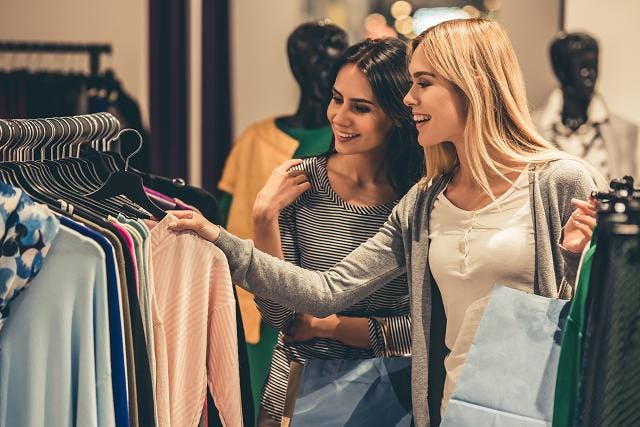Warby Parker and Allbirds continue to make headlines as other direct-to-consumer (D2C) brands attempt to replicate their success, expanding from online only to brick-and-mortar operations. But with more D2C brands making this transition, what does the future of D2C business models look like? And what does this trajectory mean for in-person shopping experiences?
To better understand the evolution of D2C brands, I spoke with Sam Vise, co-founder and CEO of Optimum Retailing, the in-store experience management solution used by many of the world’s largest multi-location retailers and service providers.
Gary Drenik: More D2C brands are entering the brick-and-mortar space in 2023. Does this mark a more permanent shift away from traditional D2C business models?
Sam Vise: We’re seeing an evolution among D2C brands. Initially, D2C brands started online because it was easier, faster, and less expensive than opening physical locations. But today, the “rent” D2C brands have to pay Google and Facebook to acquire new customers has become so expensive that physical locations (which allow customers to experience the brand) often make more sense.
Also, consider the history of the retail industry itself, where brands selling via traditional department stores, like Macy’s, often lost the ability to own their own customer relationships. Instead, the department stores owned that touchpoint. Until somewhat recently, the only way brands could earn that relationship back was through a significant investment in online channels. D2C brands have a significant advantage over brands selling through traditional retail channels because selling directly to consumers enables them to build and maintain direct relationships.
The simple fact is that most purchases are made in retail stores, not online, because consumers often prefer shopping in stores. According to a recent Prosper Analytics & Insights survey, more people shopped for apparel and accessories via a physical store (46%) compared to online and mobile sites combined (39%). The same trend is true for household supplies, groceries, health and beauty aids, and other product categories.
From a strategic perspective, D2C brands can now build upon their excellent digital reputations and customer momentum, localizing products and marketing rather than selling the same products nationally in a department store. Because what sells well in Florida in the winter months is completely different from what sells in Wisconsin.
Drenik: Can you share an example of a D2C brand that’s successfully transitioned to a physical store? What did they get right?
Vise: Amazon has done a great job. When you have a large online presence and bring it to a physical storefront, you must also replicate the convenience and efficiency consumers already expect from your brand. Amazon Go and Amazon Style both translate the way Amazon runs its direct-to-consumer online operation to the in-store environment — the interaction with Amazon is the same whether customers shop online or in-person.
Drenik: One challenge D2C brand leaders face when opening physical locations is differentiating themselves from traditional brick & mortar retailers. How can D2C brands ensure their in-store experiences align with their digital brand identity?
Vise: The most critical step a D2C brand can take when creating a physical retail space is to lead with digital solutions and technology. If your brand is transitioning from online only to a physical store, you still have to understand your data and customer base, wherever you connect with shoppers. What do customers want? What does their shopping journey look like? Do you have the right products in stock? Answering questions like these helps you be consumer driven.
D2C brands have a head start because they already have access to customer data. It’s just a matter of bringing these valuable insights to in-store experiences and reducing friction for shoppers.
Drenik: What are some innovative ways D2C brands can incorporate technology into their physical retail locations?
Vise: Technology is key to creating frictionless in-store shopping experiences that center around customers — that’s universal. From a strategy perspective, technology allows brands to not only identify their key audiences, but also deliver more personalized solutions.
Whether it’s marketing in multiple languages, offering different products in different locations, or changing the layout of your stores to suit various physical constraints, today’s technology allows brands to move away from a one-size-fits-all model and embrace customization. That’s why you need to take the time to understand your market and customer base, and then localize.
And knowing how your space is used can help you use it more productively and generate higher profits. For example, one big advantage that physical stores have over online brands is the ability to offer in-store experiences. But if you want to put a Starbucks in your grocery store to enhance the shopping experience, you need to find space for that cafe. Using technology to understand the profitability of a given location by its store layout will help you find that space and give you the ability to enhance customers’ overall experience without sacrificing profitable selling space.
Shopper tracking is another technology that’s shaping the in-person experience. While some consumers may be wary of in-store tracking, it’s no different than being tracked online and it’s all working toward the goal of improving shopping experiences. Seeing how consumers react and interact in a physical space — e.g., what products they pick up and whether they talk to an associate — is helpful data to continually optimize the shopping experience.
Drenik: How is the brick-and-mortar industry evolving as a whole? Is having a physical retail presence a must?
Vise: Brick-and-mortar stores are absolutely important — that’s why we’re seeing this transition among D2C brands.
When Covid-19 first emerged, everyone said retail was dead. But we saw the exact opposite. Yes, online retail sales were strong when stores were shut down. But when restrictions eased, restaurants and brick-and-mortar businesses surged. The demand for in-store shopping is still strong today — and a lot of that surge is driven by consumers wanting more personal experiences with their favorite brands.
But at the same time, we’re moving away from massive shopping malls and toward individual storefronts located in lively neighborhoods and other environments where customers can easily access a variety of different shopping experiences. In fact, according to a recent Prosper Analytics & Insights survey, 33% of consumers are shopping closer to home as a result of price increases. To reach target audiences and drive sales, brands require a physical presence in these spaces.
It’s a great move for brands, too. When a customer shops in-store, they might be inspired to buy products they wouldn’t have considered online because they’re interacting with sales associates, other customers, and the products themselves.
Drenik: How do consumer behaviors play into brands’ physical retail store strategies?
Vise: Consumers are craving in-person experiences and interactions — but there are two sides to this. First, there’s the knowledge side. If you’re purchasing a product, you’re not familiar with or it’s a high-ticket item like a car, you probably want to ask a knowledgeable sales associate for help. The other side is more cultural. When you’re thrift shopping, you often want the experience of talking and hanging out with like-minded people and sharing space together. But in both cases, experience is key. As much as customers enjoy the efficiencies of online shopping, they often miss out on interaction with other people.
But you can’t just open a store — remember, you must ensure the products or experiences you’re offering are curated to your audience. Otherwise, the in-person move falls short.
Flagship stores are a great way to get customers immersed in your brand. Consider Chanel, there’s always a line to get into the Chanel store in Paris. The Paris store is no different from any other Chanel store, but when you’re in France, you go to Chanel because it’s a coveted experience. Although most visitors won’t walk out of that store with a purchase, Chanel can’t replicate that lasting experience online, so the in-store investments are still worth it. People will remember their Chanel Paris experience favorably, which increases the likelihood they’ll become a customer in the future.
Drenik: Thank you, Sam, for your insights on the future of D2C brands and technology’s role in in-store shopping experiences.
Read the full article here










